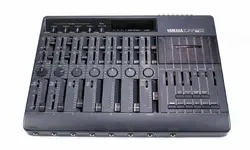K
kr236rk
New member
Hi,
Back in the day, how did you record on a 4-track cassette deck please?
How many overdubs could you do - were there buttons for overdubbing - could you erase an overdub without affecting the original recording (first track)?
Thanks
Back in the day, how did you record on a 4-track cassette deck please?
How many overdubs could you do - were there buttons for overdubbing - could you erase an overdub without affecting the original recording (first track)?
Thanks
Last edited:

 are there any demos on the web, like you'd find in an instruction manual please ... YouTube?
are there any demos on the web, like you'd find in an instruction manual please ... YouTube?

 basically need a 4 track (or higher) cassette recorder with sliders, anything else is home hi-fi ware not studio oriented?
basically need a 4 track (or higher) cassette recorder with sliders, anything else is home hi-fi ware not studio oriented?
 - last multitracked on cassette in 1980 on a home hi-fi stereo system (one and a half track?) been 100% digital since about 2000. Can't wait to see those sprockets turning!
- last multitracked on cassette in 1980 on a home hi-fi stereo system (one and a half track?) been 100% digital since about 2000. Can't wait to see those sprockets turning!
